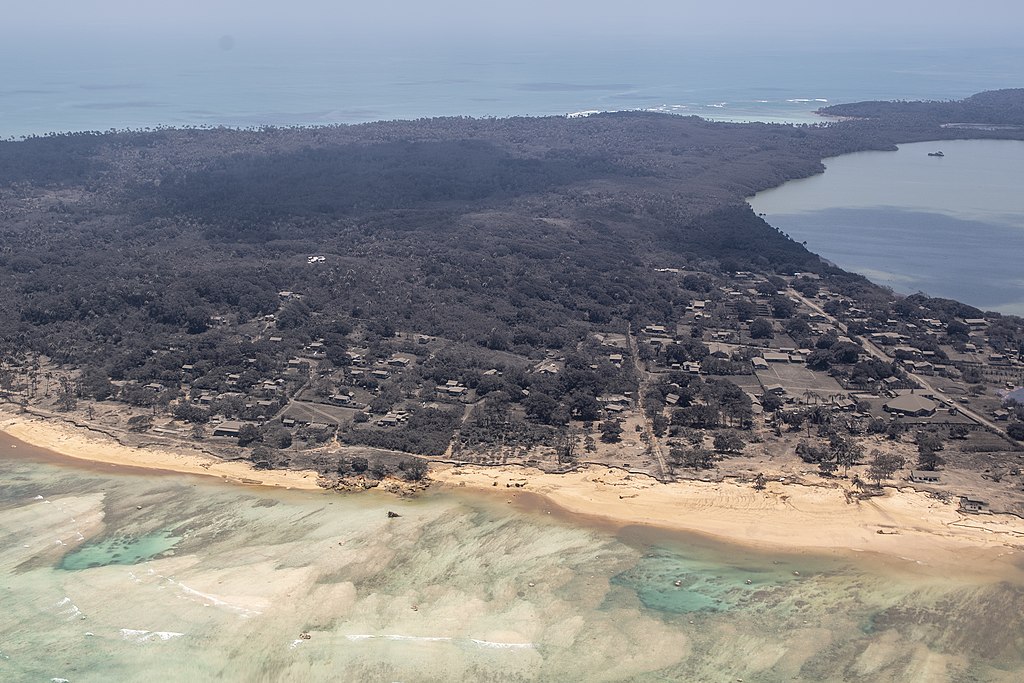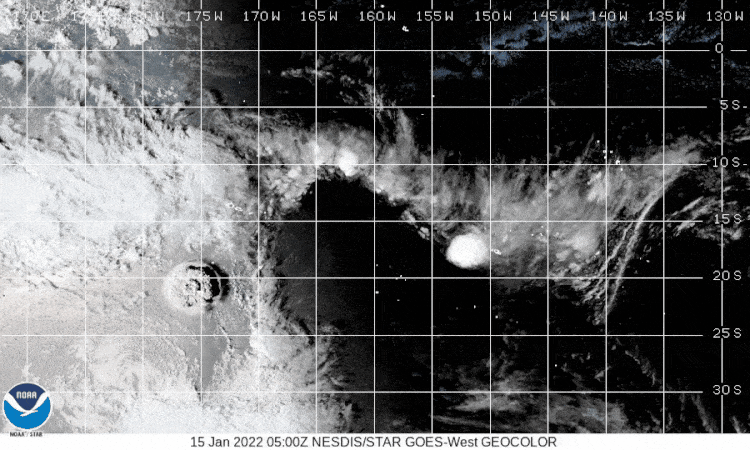
View of Tonga on January 18, 2022 after the volcanic eruption. (Photo: NZ Defence Force via Wikipedia)
Ever since the eruption of an underwater volcano near Tonga, the world has been anxious to learn more information. While little information is still known about what’s happening on the ground in Tonga, researchers have been providing more facts about the epic explosion. So just how big was the eruption, which could be seen via satellite? According to NASA, it was more powerful than the nuclear bomb dropped on Hiroshima during World War II.
When looking to quantify things, James Garvin, the chief scientist at NASA’s Goddard Space Flight Center told NPR that they estimate that the blast was the equivalent of 10 megatons of TNT. This not only makes it more powerful than the bomb at Hiroshima, but more than 500 times as powerful.
The blast caused tsunami warnings around the globe and two people were actually killed off the coast of Peru due to waves caused by the volcano. Hunga-Tonga-Hunga-Ha’apai erupted on January 15, sending off a massive amount of ash and smoke into the atmosphere. The volcano, which sits about 20 miles off the coast of Tonga’s Fonuafo’ou island, stretches down 6,500 feet to the ocean floor.

Satellite view of the volcanic eruption near Tonga. (Image: NOAA/NESDIS/STAR)
Since the eruption, communication with Tonga has been scarce. The main communication line that links the island nation with the world sits underwater and is broken in two places. Experts estimate that it could take up to a month to repair depending on their findings once they arrive on site. Relief efforts have also been hampered by the thick layer of volcanic ash that covered the main airport’s runway. Residents participated in a heroic effort to clear the ash so that both Australia and New Zealand could send in supplies. Luckily, the first relief planes were able to land on Thursday.
Many aerial photos are showing the unfortunate destruction that the volcano left in its wake. Many homes have been damaged or have simply disappeared. While few deaths have been reported, that could change as more information comes to light. Already, one story is emerging that captures the resilience of the Tongan people. Lisala Folau, a 57-year-old Tongan man, is being called “Aquaman” because he swam for 27 hours after being swept away in the waves. He was carried away from his small island of Atata and kept afloat until he reached the main island a little over a day later. Here’s hoping that more heartwarming stories such as these will emerge.
h/t: [NPR]
Related Articles:
Spectacular Photos of a Powerful Volcano Erupting in Chile
Magnificent Volcano Photos Celebrate the Intense Beauty of Hawaii
Long-Dormant Icelandic Volcano Erupts After 6,000 Years of Inactivity
Photographer Captures Viral Shot of the Northern Lights Behind an Erupting Volcano
